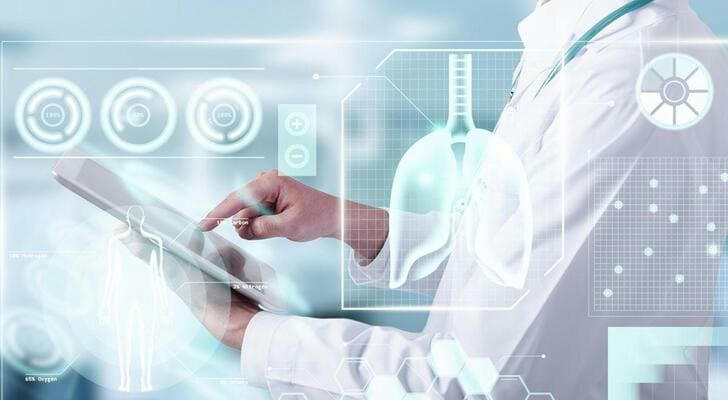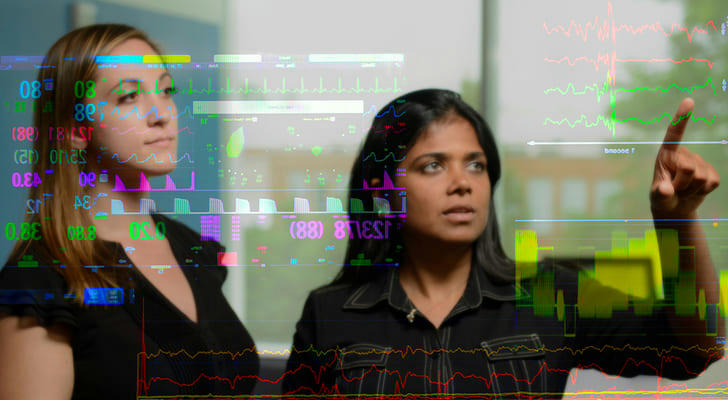How Innovation is Reshaping U.S. Healthcare: From AI to Telemedicine

The landscape of American healthcare is undergoing a profound transformation, powered by rapid technological innovation and digital integration. What was once confined to hospital walls and face-to-face interactions has now evolved into a multi-layered ecosystem that extends into patients’ homes, phones, and even wearable devices. From artificial intelligence to telehealth, modern innovations are not only enhancing patient care but also redefining the roles of providers, reshaping clinical workflows, and improving access across diverse populations.
Artificial Intelligence: Smarter Decisions, Faster Diagnoses
Artificial intelligence (AI) is playing an increasingly central role in U.S. healthcare, especially in diagnostics, administrative efficiency, and predictive analytics. AI-powered algorithms are now capable of analyzing complex medical imaging with high accuracy, assisting radiologists in detecting early signs of diseases such as cancer or cardiovascular conditions. These tools help streamline workflows and reduce the margin of human error.
In hospitals, machine learning models are being used to predict patient deterioration, allowing providers to intervene before a condition becomes critical. In some settings, AI chatbots are being used to triage patient concerns, answer basic medical questions, and guide users toward appropriate care—all without requiring a clinician’s immediate involvement.
Moreover, the integration of AI into electronic health record (EHR) systems has helped in reducing administrative burdens by automating tasks like billing codes, appointment reminders, and clinical documentation, freeing healthcare workers to focus more on patient care.
Telemedicine: Expanding Access and Convenience
Telemedicine has rapidly evolved from a convenience to a necessity. Accelerated by the COVID-19 pandemic, virtual healthcare services have expanded access for millions of Americans, particularly in rural and underserved areas. Patients can now consult physicians, mental health professionals, or specialists from the comfort of their homes.
These services not only improve access but also increase efficiency. Telemedicine has helped reduce no-show rates, shorten wait times, and allow continuous care for chronic conditions through routine virtual check-ins. Providers, in turn, can see more patients in less time and offer care that is both timely and cost-effective.
With growing acceptance among both patients and providers, telemedicine has become a core component of modern healthcare infrastructure. It is also influencing policy development, insurance coverage models, and cross-state medical licensing.

Wearable Technology: Real-Time Health Monitoring
Wearable devices, such as smartwatches and fitness trackers, are becoming valuable tools in preventive care and chronic disease management. These devices monitor heart rate, sleep patterns, oxygen levels, and physical activity, offering both users and providers real-time data on an individual's health status.
Healthcare professionals can use these insights to personalize treatment plans, adjust medications, and catch early warning signs before they escalate into more serious conditions. For example, continuous glucose monitors are helping individuals with diabetes manage their condition more accurately, while wearable ECG monitors can detect irregular heart rhythms that may require immediate attention.
These technologies empower patients to take a more active role in their health, fostering a culture of proactive, rather than reactive, care.
Robotics and Automation in Clinical Settings
Robotic systems have made significant strides in surgical precision and hospital operations. In surgery, robotic-assisted platforms allow for minimally invasive procedures, which often lead to faster recovery times and lower complication rates. Surgeons can perform delicate tasks with enhanced dexterity and visibility, which is especially useful in procedures such as orthopedic or neurological surgeries.
Beyond the operating room, automation is being applied in pharmacies and hospital logistics. Robotic systems manage medication dispensing, inventory control, and even disinfection procedures. These applications reduce human error, improve safety, and allow healthcare facilities to operate more efficiently.

Data-Driven Personalization and Genomics
Personalized medicine, driven by data and genomics, is changing how diseases are prevented and treated. Through genomic sequencing, healthcare providers can now tailor treatments based on an individual’s genetic makeup. This is particularly impactful in oncology, where targeted therapies are developed for specific cancer mutations, increasing treatment effectiveness and reducing side effects.
Large-scale data analytics also enables population health management. By identifying trends and risk factors, healthcare systems can develop targeted prevention strategies and allocate resources more effectively. As data sharing across providers becomes more seamless, collaboration in treatment planning is improving outcomes at both the individual and community levels.
Challenges and Ethical Considerations
While innovation brings undeniable benefits, it also raises important challenges. Concerns about data privacy, digital inequality, and the security of electronic systems continue to be pressing issues. Not all communities have equal access to broadband or digital devices, potentially widening existing health disparities.
Additionally, reliance on algorithms and automation raises ethical questions about bias, transparency, and accountability. It’s crucial for healthcare institutions to implement oversight mechanisms and ensure that technological advancements benefit all patients equitably.
Conclusion
From AI diagnostics to remote consultations and wearable health tracking, innovation is reshaping U.S. healthcare in ways that were unimaginable just a decade ago. These advancements are improving access, enhancing efficiency, and transforming patient care. However, with progress comes responsibility—to ensure that these tools are used ethically, inclusively, and effectively.
As the industry continues to evolve, healthcare professionals, policymakers, and technologists must collaborate to harness the full potential of innovation while addressing the challenges that come with it. The future of healthcare is not only high-tech—it’s smarter, more connected, and increasingly centered around the patient experience.
